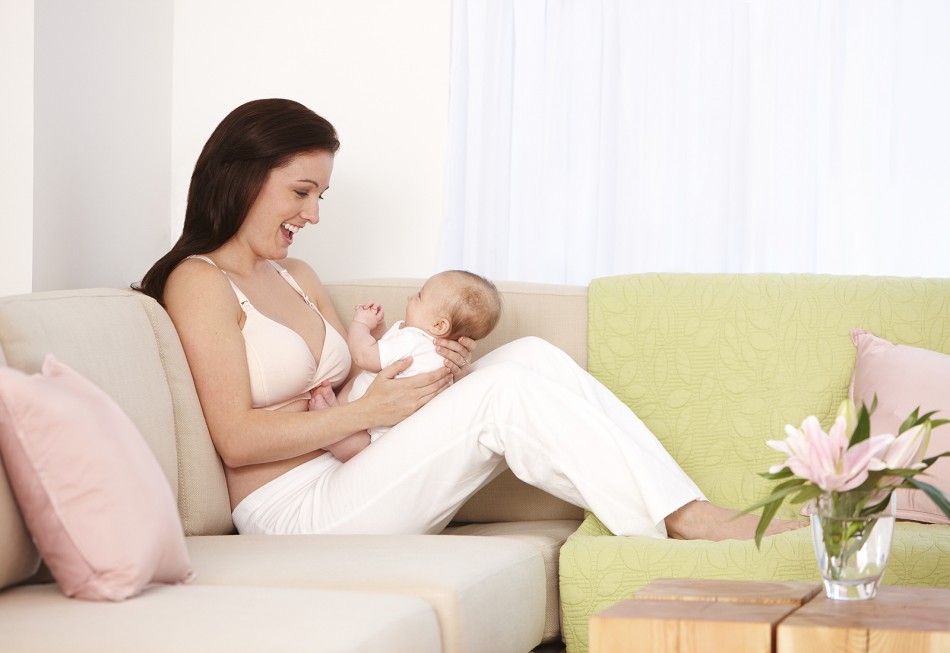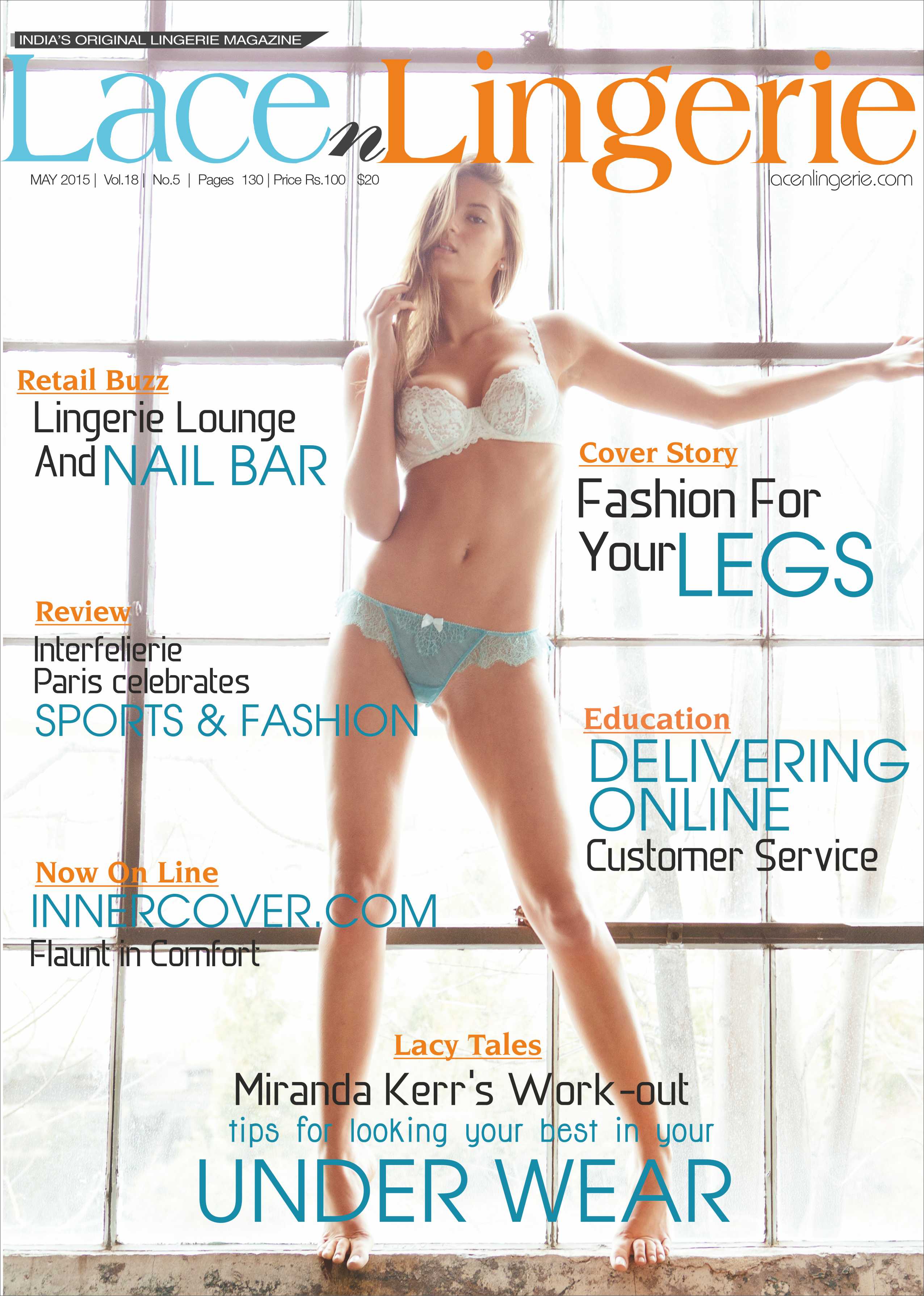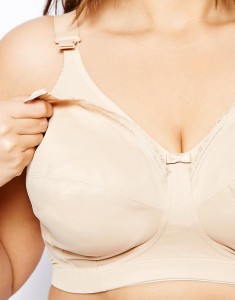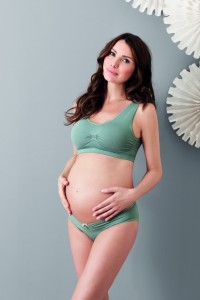A woman’s body keeps changing with time and it is imperative to have the right fit to feel comfortable and prevent medical problems. This advice becomes even more relevant during the pregnancy, and nursing afterwards. There are some common mistakes made by most women while buying maternity & nursing bras. Some useful tips that could help you to plan for and choose the right nursing bra are discussed below.
Nursing bras look like regular bras, but the cups open or lower when you pull them aside, or unsnap, unzip, or unhook the closure. Whichever style you choose, proper fit is the key to comfort. Besides being uncomfortable, a bra that fits poorly may put pressure on your milk ducts, which can cause them to get plugged and lead to inflammation in the breast.
 Many women buy the wrong-size nursing bra. A common mistake is to buy a larger band size but the same cup size you wear when you’re not pregnant. In fact, some women can stay with their original band size. The rib cage expands during pregnancy, but usually not enough to require a larger band size (although everyone is different). Some women may want to go up a band size for comfort. That’s fine as long as your bra has plenty of adjustment hooks in the back. Most women will need a larger cup size during pregnancy. Wear what you find most comfortable and supportive–either a larger regular bra, a maternity bra, or a nursing bra that you buy early. Just as with nursing bras, an expert fitter can help you with maternity bras.
Many women buy the wrong-size nursing bra. A common mistake is to buy a larger band size but the same cup size you wear when you’re not pregnant. In fact, some women can stay with their original band size. The rib cage expands during pregnancy, but usually not enough to require a larger band size (although everyone is different). Some women may want to go up a band size for comfort. That’s fine as long as your bra has plenty of adjustment hooks in the back. Most women will need a larger cup size during pregnancy. Wear what you find most comfortable and supportive–either a larger regular bra, a maternity bra, or a nursing bra that you buy early. Just as with nursing bras, an expert fitter can help you with maternity bras.
Depending on the manufacturer, cup sizes can range from A through D, then DD, DDD, E, F, G, H, and I. Another mistake, experts say, is that women may not invest in good-quality nursing bras since they don’t think they’ll be using them for long. Since this is a time when you most need extra support, it’s worth the investment to get something that will help you and keep you comfortable.
A professional fitting will ensure a comfortable fit and the correct size. Try on bras for size and feel, and practice with nursing pads in place.
Tempted to use your regular bra for nursing instead of a nursing bra? That’s one cost-saving measure you don’t want to make. Regular bras aren’t designed for nursing and may not give you the extra support you need to be comfortable. And lifting your regular bra up over your breast to nurse can put a lot of pressure on breast tissue.
Recommendations
Look for bras that are 100 percent cotton or a blend of cotton and Lycra or other stretchy synthetic. Since the right bra size is important and can help reduce the risk of breast-feeding complications, such as clogged milk ducts, shop at a maternity store or boutique that has an experienced bra fitter. Every woman’s body changes at different rates during pregnancy and after childbirth.
Get Fitted In the Last Few Weeks of Pregnancy
We don’t recommend that you start shopping for nursing bras too early in the pregnancy or too late after it. As a general rule, try to get fitted somewhere around the 8th month of pregnancy because the breast size during this time is optimal for the body to know how to regulate the milk supply. Taking professional advise at this point will help you to find just the right fit to support your breasts and body during the prenatal period and obviously after it as well.
Search for Bras with Multiple Hooks & Eyelets
Now, this is where you have to plan for the future and look for those bras that have around 6 hooks and eyes; when you start with the loosest one on the band (when around 8-month pregnant, as discussed above), you will have the flexibility to tighten the band after the birth as your rib cage contracts again. Since most of the support to the bra comes from the band, it is important to have the right band size as well.
What about Underwire?
Many women would have told you to avoid wearing underwire bras during pregnancy & nursing as the pressure exerted by an underwire may lead to inflammation of breast tissue which could consequently lead to plugged ducts. It’s important to point here that a quality underwired nursing bra would seamlessly provide the fit and comfort; however, it cannot be emphasised enough that wearing a bra which is too tight or pokes/digs into the breasts must be avoided at all costs.
Invest in bras that are made from quality fabrics and trims. It is noticeable at first glance if a product is well made. The elastics should be firm and should not have too much give. A good quality bra will often have multiple layers and feel substantial to touch. Cheaper bras are made from inferior fabrics and trims. These bras will often loose their elasticity and ability to support after a few washes. Purchasing quality should mean that you would feel more comfortable and supported for longer.
Purchasing the incorrect style for your body shape
Not all bra styles will suit every woman. Our bodies are all different including our breast shape and form.
– Plunge bras are wonderful for smaller busted woman who tend to be heavier at the base of the breast.
– Balcony styled bras is good for women who have a rounder more even weight distribution in the breast.
– Full coverage bras are ideal for women who are larger in the bust. The full cups are designed to cover over the entire breast area resulting in more support and a secure fit.
One of the most prevalent myths about buying a breastfeeding bra is that the bra should have extra room in the cup. Today’s nursing pads are so slim that you should not need any additional room to accommodate them, and the best bras out there will have a stretchy fabric on the top so that the cup will continue fit you perfectly as your breasts change size during the day.
Immediately after the birth of your baby, your breasts will change shape and size in more ways than you may have ever imagined.
Because of these major fluctuations in breast size, don’t stress about fitting into a particular size of cup. Instead pick a bra that is seamless and has stretchy cups so you will still be provided with support while remaining comfortable.
Our best advice: do not even think of being professionally fitted until you are at least 8 months pregnant. Your breasts will change drastically after the birth of your baby and their size will not ‘stabilise’ until around 8 weeks after the birth (by this time your body will have learned how to regulate its milk supply).
The back band is too big
This is one of the most common mistakes. The back band of the bra should fit firmly and parallel across the back. It should not rid up or feel too loose. Should the back band start to feel loose when done up on the tightest hook. It is time to throw it away and purchase a new one. The back band provides the wearer with 80% of the bras support.
Wearing wired bras during periods of rapid fluctuation
It is our recommendation to wear a seamless bra during those transitional periods when the breasts are experiencing rapid growth. A wired bra worn during this time can be extremely uncomfortable and can cause conditions such as mastitis due to compression and the bra not fitting correctly.
A flexible wired bra can be worn from 4-9 moths of pregnancy and at 4 weeks post birth continued once the body learns to regulate it’s milk production.
Compressing the breasts
Your breasts will often feel extremely sensitive during this time. Purchase bras that separate and support your breasts. Not only will the bras feel extremely comfortable but will appear flattering too.
TIP: You should be able to push the centre front of the bra comfortably between your breasts. If you are unable to do this, the bra is not effectively separating your breasts.
Some brands bras are designed to push up and compress the breasts creating what is commonly known as a mono-boob. This is not only uncomfortable but can cause conditions such as mastitis during periods of fluctuation.
Synthetic fabrics on the skin
Look for maternity/nursing bras that have cotton lining and cotton slings.
The cotton will not only feel comfortable but will also help to keep you cool.
Synthetic fabrics do not breath and can cause irritation and sweating.
Types of Nursing Bras
Just like regular bras, you’ll find a wide range of styles–and prices–for nursing bras. Whether you want an underwire design, a sports bra style, or a bra built into a camisole top, you can find it in a nursing bra.
Closure locations vary depending on the bra, and include flaps that attach at the top near the shoulder strap, flaps that open and close between the two cups, and no flaps at all, where the cups just pull down for quick access. Latches vary, too. Squeeze or push-type latches are usually easy to operate with one hand compared with snaps or hooks.
Here are some nursing bra types you may find available:
Sleep nursing bras
Sleep nursing bras are made out of soft cotton, have spandex for stretch, and hug your bust without constriction. Since there are no clasps to deal with, a tired new mom can easily pull down the cups of her sleep nursing bra to give a hungry baby easy access. Most manufacturers have several nursing-bra lines, including models that are comfortable for sleeping or lounging in.
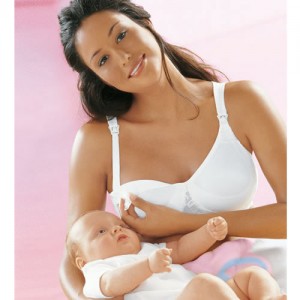 Soft-cup nursing bras
Soft-cup nursing bras
Seamless “soft cup” bras, such as Lovable, Morph, Anita, Sonari, Libertina, Laavian etc! Body Silk Seamless Nursing Soft Cup Bra and has “snap down clips” that let you lower the cups from the hook closure near the shoulder strap. It features multiple hook closures in the back.
Sports nursing bras
There are different kinds of sports nursing bras which is wireless and made of spandex and nylon.
Tank-top bras
Nursing bras that are built into tank tops offer discreet nursing clips for quick breast-feeding access.
Breast-pumping bras
Pumping bras can replace a nursing bra or in some cases be worn over one. They allow you to pump “hands free” with almost any brand of electric breast pump, either double or single. Once you put it on, unsnap the pumping panel from the bra cup and insert the pump’s breast shield into the bra cups. You then attach the pump tubes and collection bottles to the pump shield and you’re ready to pump.
Nursing-bra accessories
In addition to nursing bras, you’ll need disposable or washable cotton pads that you can tuck inside to absorb any leakage. The disposable types are usually made of super-absorbent material that wicks moisture away from the skin. They’re higher-tech than cotton nursing pads, but both types cost about the same. Both kinds prevent clothing stains and skin irritation, and are invisible to the outside world, so it’s just a matter of personal preference. You may also need special bra shells that can protect sore nipples from irritation or help draw out inverted nipples. You can find nursing pads and bra shells at drugstores, specialty maternity shops, and stores that sell baby products.

